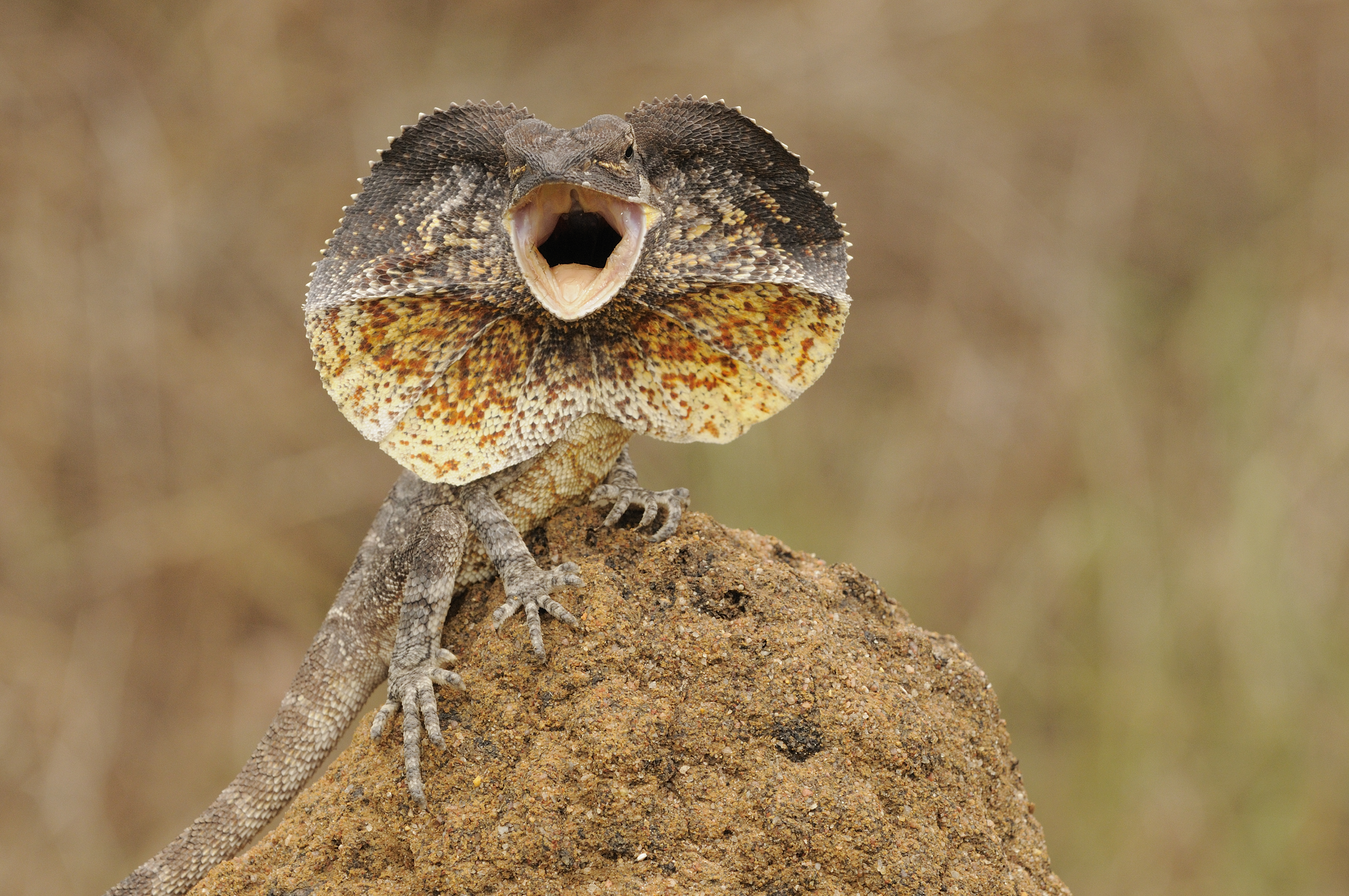Frilled lizard, also called the frill-necked lizard or frilly, is a lizard known for the broad flap of skin that rings its neck. The lizard extends this frill to make itself appear larger, often when threatened by predators (hunting animals). The frill can reach 1 foot (0.3 meter) or more across. The frilled lizard is found in northern Australia and southern New Guinea.

The frilled lizard can grow to about 3 feet (0.9 meter) long. The tail makes up more than half of this length. The female is somewhat smaller than the male. The body is generally green-yellow to gray-brown in color. The frill is brighter and may have a range of colors, including black, brown, green, orange, red, white, and yellow. The lizard can quickly change the color of its skin. It may turn nearly black in the morning. This color helps the lizard absorb heat. When hot, the lizard may turn coppery red.
The frilled lizard favors tropical savannas (grasslands with widely scattered trees and shrubs). The lizard spends most of its time in the trees. It climbs down to feed. The lizard eats mostly ants, spiders, and termites. It sometimes eats small lizards and rodents. It is eaten by birds of prey, monitor lizards, snakes, dingoes, and cats.
When threatened by a predator, the frilled lizard extends its frill and rears up on its hind legs. It also holds its mouth agape and hisses. If this display does not scare away the predator, the lizard runs to climb the nearest tree. Males also rear up, gape their mouths, and display their frills when competing for territory.
Frilled lizards mate and lay eggs in the rainy season, which generally lasts from November to April. Females lay from about 5 to 25 eggs in a shallow nest they dig in the ground. Females sometimes lay a second clutch of eggs if food and other resources are abundant. Young frilled lizards have patterns of black, gray, and white.
The frilled lizard remains abundant, but scientists warn that it faces growing threats. Introduced species such as cane toads and cats may threaten the lizard. Habitat destruction and wildfires pose another threat. In addition, climate change is a growing concern. Rainfall has increased in northern Australia. Heavy rain can flood frilled lizard nests, killing the eggs. Frilled lizards may live for up to 8 to 12 years in the wild.
